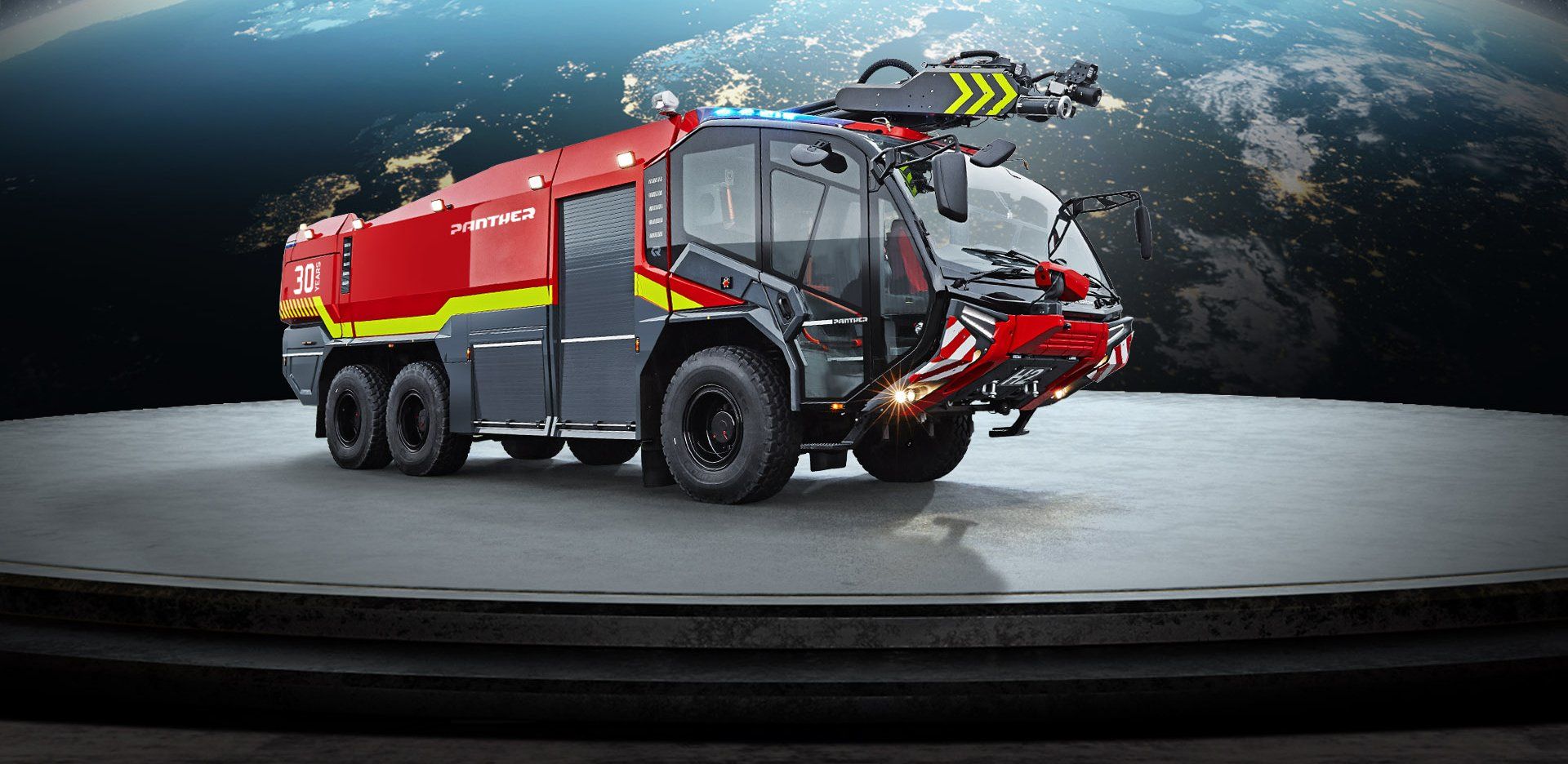5 PANTHER
in the desert.
An oasis on the Persian Gulf
Abu Dhabi, the capital of the United Arab Emirates, is located directly on the Persian Gulf. Although its sea arms run through the city area, the annual average daily maximum temperature is an inconceivable 34 degrees Celsius (93 degrees Fahrenheit). South and east of the oasis, it’s not only hot but also arid and sandy—this is the terrain we encounter around Abu Dhabi International Airport.
A destination welcomes more and more visitors
Abu Dhabi is home to one point five million people. It is also an international business hub and an attractive destination for tourists around the globe. Formula 1 has been a regular guest since 2009; and a major art institution, the Louvre Abu Dhabi, opened its doors there in 2017.
Most visitors arrive in Abu Dhabi by airplane. Abu Dhabi Airport, located thirty kilometers east of the city center, has been expanded since its opening in 1982 to accommodate over twenty million passengers. Further expansion has recently become necessary, as the targeted number of air travelers is being outpaced by reality. Additionally, the city itself is projected to grow to three million inhabitants by 2030. Abu Dhabi is also a nerve center for connecting flights to Africa, Europe, and Asia. Twenty-eight airlines connect the city on the Arabian Peninsula with 117 destinations worldwide. This leads to an average of four hundred takeoffs per day—and resulted in more than ten million air travelers in the first half of 2023 alone. “An increase of sixty-seven percent compared to last year,” as the British-born senior manager of Airports Emergency Services John Mayman states.
More than the vehicle—the overall product sealed the deal
This important Arabian airport recently welcomed a major addition to its family: a total of eight vehicles were ordered from Rosenbauer, among them an E8000 rescue ladder, two water tankers with a 40,000-liter (10,566 US gallons) capacity each—and five PANTHER 6×6. A major display of trust: “We’ve supplied Abu Dhabi Airport with several vehicles in the past, but the majority of the fleet, especially the ARFF trucks, weren’t Rosenbauers,” explains Martin Kitzmüller, the Rosenbauer sales manager responsible for this region. Thus, the sale wasn’t exactly a done deal from the outset. “We had a lot of convincing to do for our client to purchase our product.” What ultimately swayed them to buy Rosenbauer? “In the end, it was our local service setup that secured the acquisition. All vehicles were sold with a five-year guarantee and an all-in service package.” The benefits for Abu Dhabi Airport were full transparency of the running costs and total reliability regarding the vehicles.
Robust, modern, fully equipped
“With their three axles and 700 horsepower engines, the PANTHER are almost fully equipped,” Martin raves. Basically, all five airfield rescue and fire-fighting vehicles (ARFF) feature N80 pumps that are supplied by 12,500-liter (3302 US gallons) tanks—a delivery volume that is crucial during an aircraft fire. They allow for up to 9,000 liters (2378 US gallons) per minute at 12 bar pressure. Because the pump elements are made of gunmetal in this case, seawater can also be used without hesitation. Add to this the high-volume low-attack monitor (HVLA), with which burning parts can be attacked from near the ground, for instance from underneath the aircraft wing or fuselage—throwing up to 4,750 liters (1255 US gallons) of water per minute at the fire.
One of the almost forty-ton vehicles features a twenty-meter high-reach extendable turret (HRET), which is additionally equipped with a piercing tool to deploy extinguishing agent in the aircraft interior.
Fighting fires is not only possible with water, foam, and powder—there’s also a CO2 extinguishing system on board. It’s clear that nothing is left to chance at Abu Dhabi Airports. Or, to put it in John’s words, “Having state-of-the-art rescue and firefighting equipment is our ultimate goal.”
Well-prepared for expansion
The new state-of-the-art Terminal A at Abu Dhabi International Airport was launched in November 2023. This will more than double the airport's capacity to 45 million passengers per year. It’s understandable that the airport authorities and the almost 180 firefighters wanted to be well-prepared. And they’ve found the right partner in Rosenbauer in terms of equipment. “In recent years, Abu Dhabi Airport has relied exclusively on Rosenbauer for new vehicles as well as service, refurbishment, and new equipment,” Martin says, visibly proud of the accomplishments of the entire company and the flawless cooperation with the firefighters of Abu Dhabi.

Register now for the Rosenbauer Newsletter & always be well informed!
Contact
Rosenbauer International AG
Paschinger Str. 90
4060 Leonding, Austria
office@rosenbauer.com
















